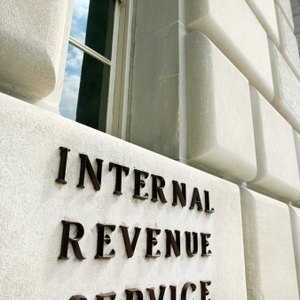
The IRS maintains separate tax rates for corporations and individuals. The income of corporations qualifying under Subchapter S of the Internal Revenue Code, however, is attributed to shareholders and taxed accordingly. The income of partners, LLC members and self-employed persons is taxed at individual income tax rates, with certain exceptions.
C Corporations Vs. Shareholders
As of 2011, individual income tax rates range from 0 percent to 35 percent, and corporate tax rates range from 15 percent to 35 percent. A C corporation -- any corporation that has not been granted S corporation status by the IRS -- pays taxes at corporate rates. When the corporation distributes dividends, the shareholder must pay federal tax on these dividends at either individual or corporate tax rates, depending on the shareholder's identity.
S Corporations Vs. Shareholders
S corporations are corporations that meet certain IRS requirements, such as having no more than 100 shareholders. Except for passive income, these corporations are not taxed -- instead, all income is attributed to shareholders regardless of whether or not the corporation distributes any dividends. This means that if you hold a 22 percent stake in an S corporation that had $2,000,000 in taxable income last year, the IRS will add $440,000 to your taxable income and tax you on it. If you are an individual rather than a corporate shareholder, you will be taxed at individual income tax rates.
Partners and LLC Members
Partners are taxed in the same manner that is used to tax shareholders in S corporations. Like S corporations, partnerships are not taxed as separate legal entities. The IRS also taxes LLCs as partnerships, unless an LLC chooses to be taxed as a corporation. Any LLC may elect to be taxed as a C corporation, and a qualifying LLC may be taxed as an S corporation.
Employment Tax
Employees pay Social Security and Medicare taxes, and employers match their contributions. Self-employed persons do not pay these taxes, but pay self-employment tax instead. As of 2011, the rate was 13.3 percent of net earnings over $400 for the first $106,800 in net earnings and 2.9 percent of any amount over $106,800. You do not have to pay self-employment tax on dividends. If you are self-employed, you must pay estimated taxes every quarter.
References
- IRS.gov: Instructions for Form 1120S
- IRS.gov: Instructions for Form 1120
- Internal Revenue Service. "About Form 1120-S, U.S. Income Tax Return for an S Corporation." Accessed Jan. 20, 2020.
- Internal Revenue Service. "2019 Instructions for Form 1120S," Page 21. Accessed Jan. 20, 2020.
- Internal Revenue Service. "About Form 1065, U.S. Return of Partnership Income." Accessed Jan. 20, 2020.
- Internal Revenue Service. "2019 Instructions for Form 1120S," Page 2. Accessed Jan. 8, 2020.
- Internal Revenue Service. "S Corporations." Accessed Jan. 8, 2020.
Writer Bio
David Carnes has been a full-time writer since 1998 and has published two full-length novels. He spends much of his time in various Asian countries and is fluent in Mandarin Chinese. He earned a Juris Doctorate from the University of Kentucky College of Law.

